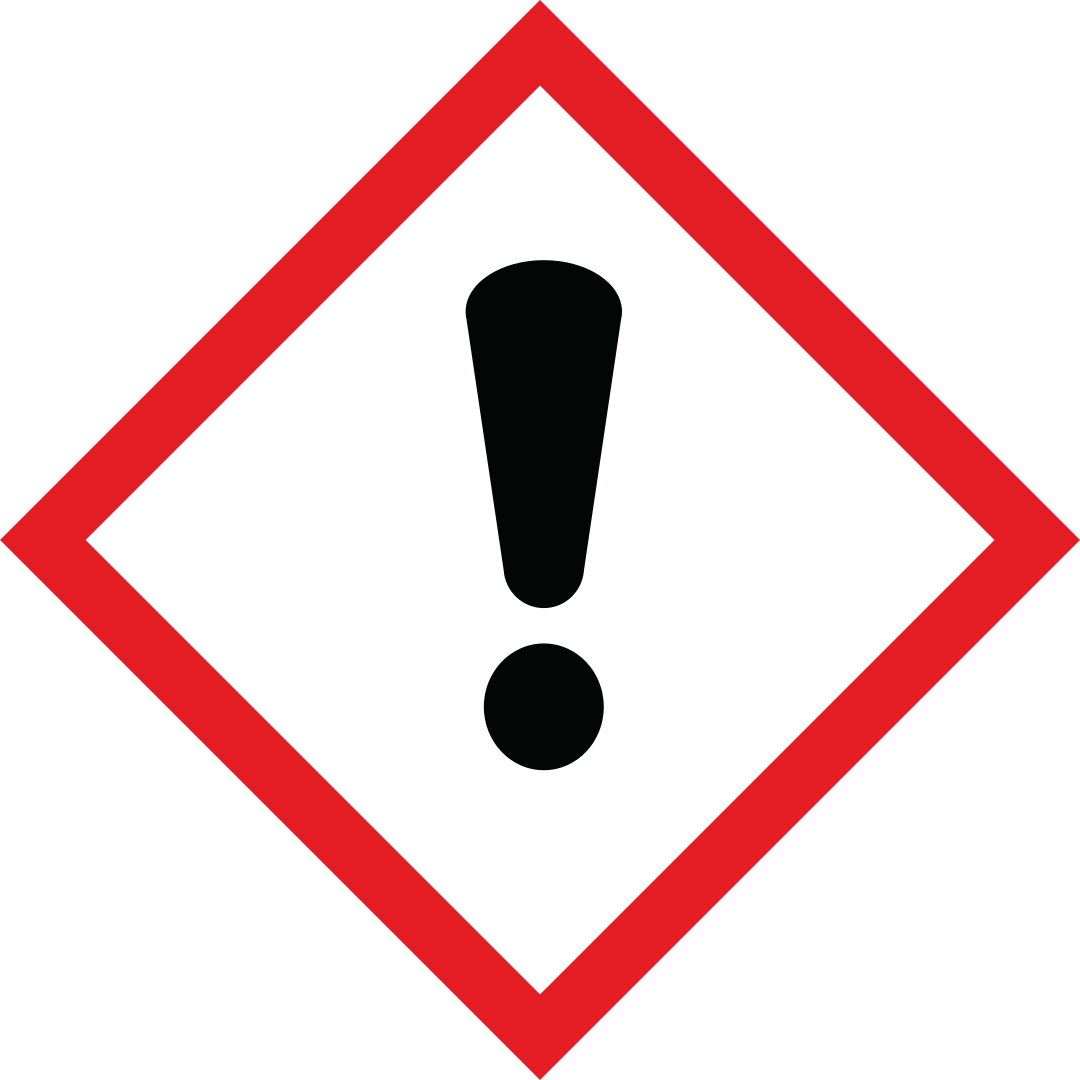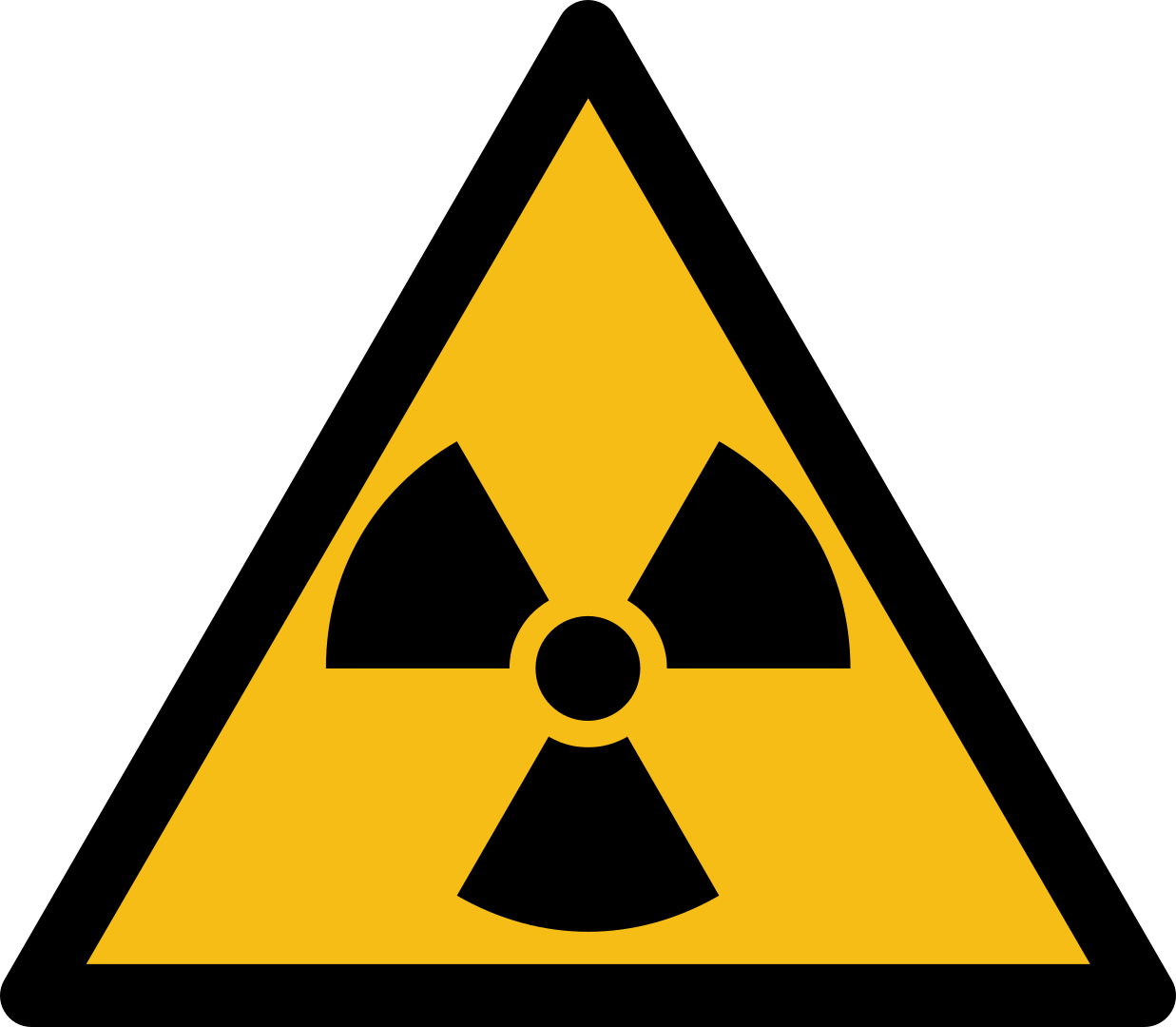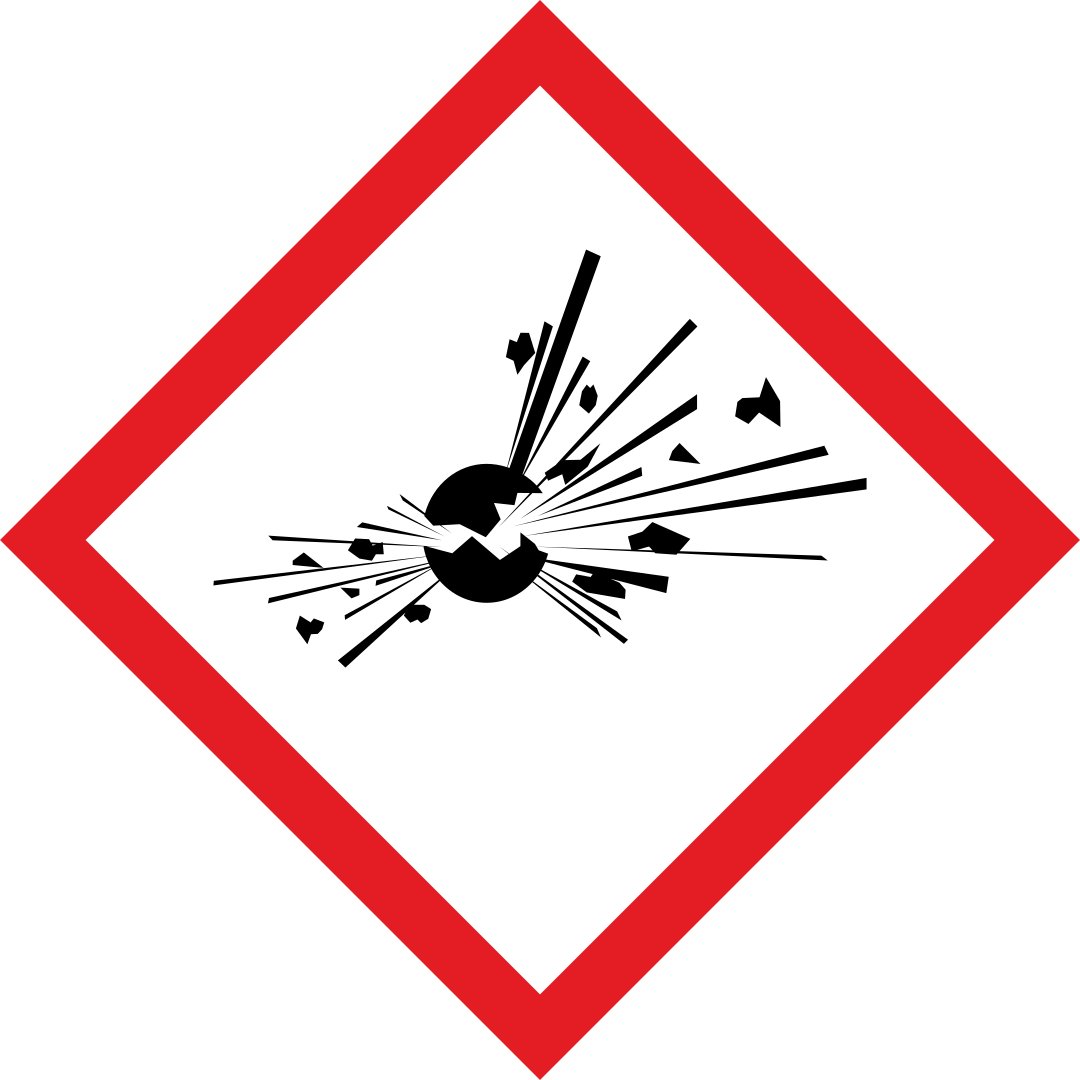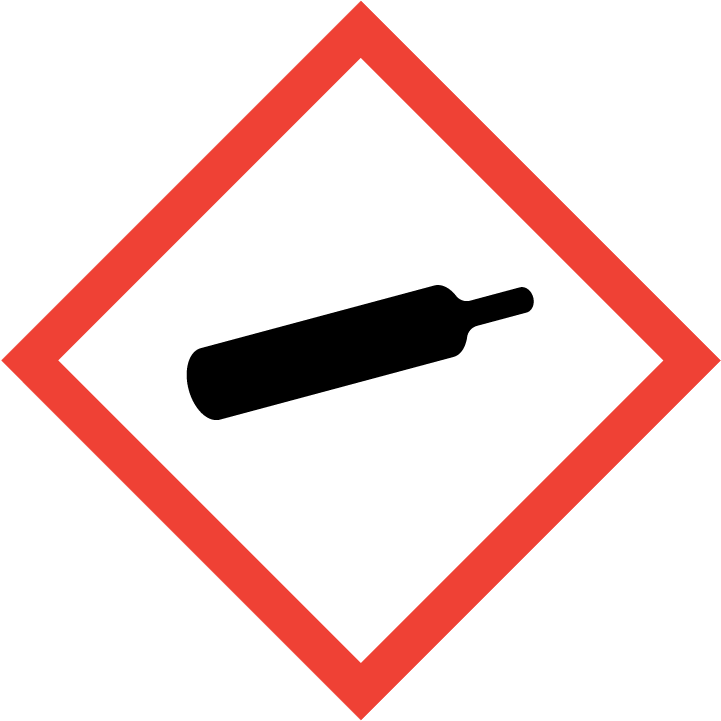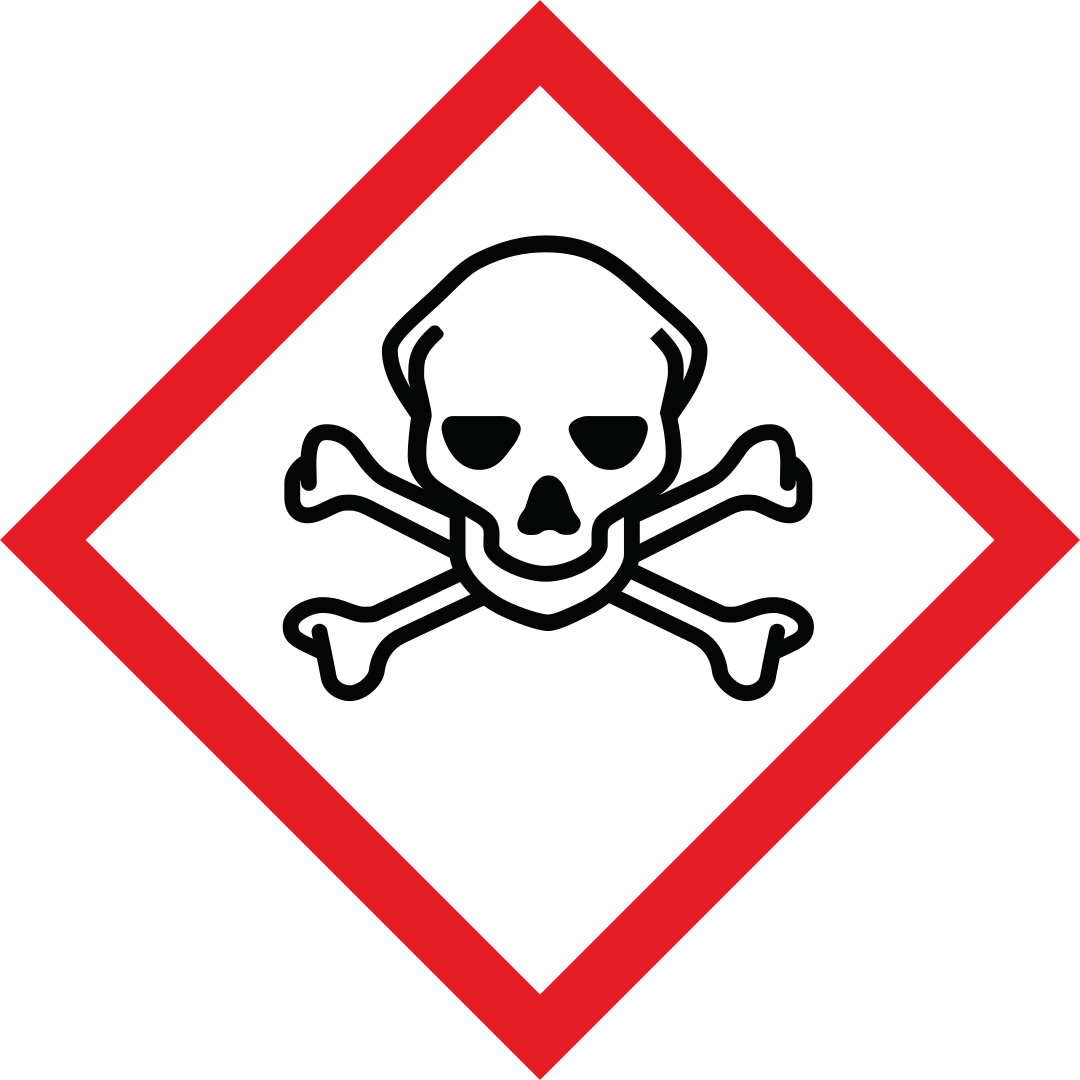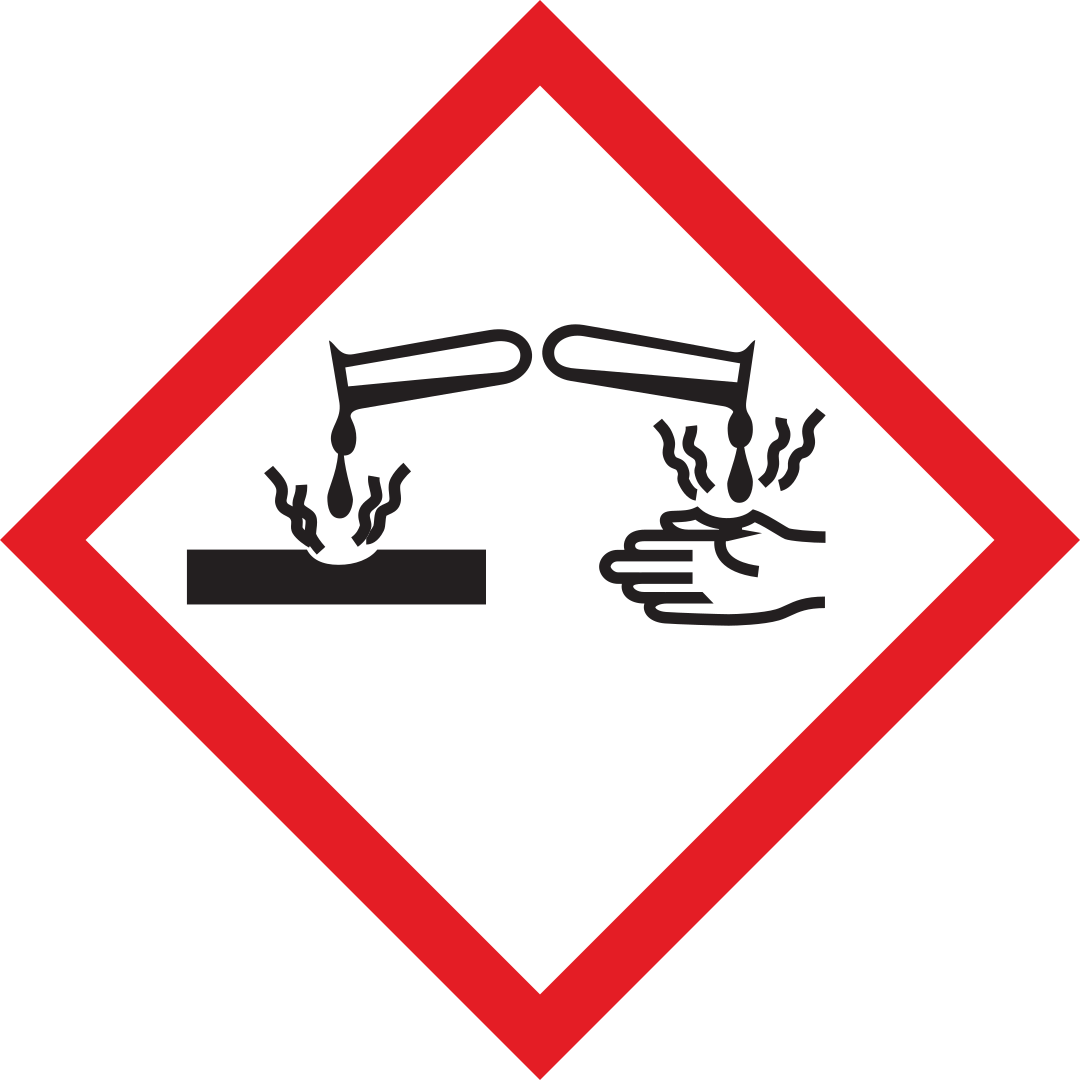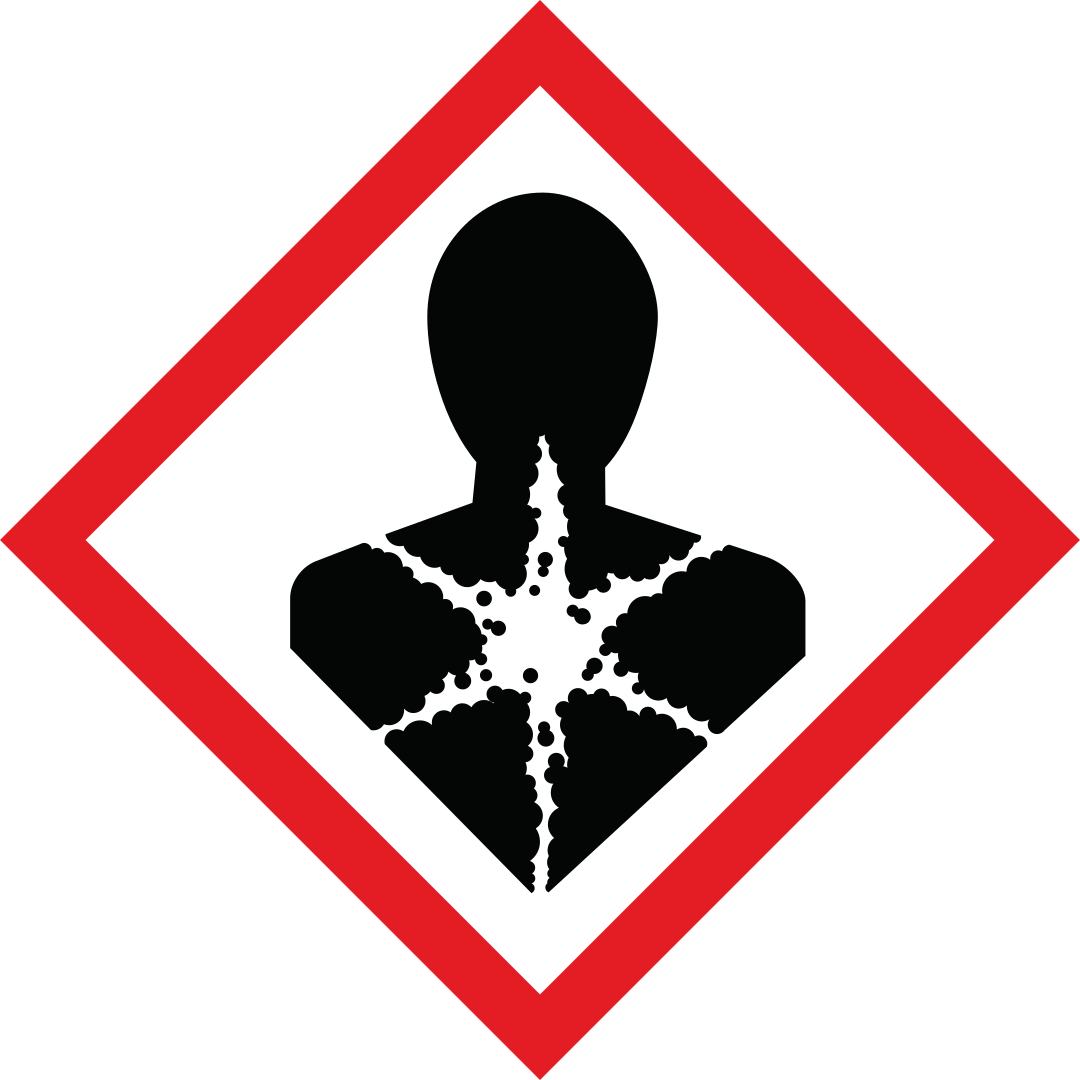You have 45 minutes to answer 50 multiple choice CSCS Health, Safety and Evironment Test questions for Operatives and Specialists. You need to answer at least 45 out of 50 questions correctly to pass. Answers may be reviewed after each question or at the end of the test. Good luck!
List of questions in above test (quick view). Click question box to reveal correct answer.
1. You spot something on site you think might be an unmarked hazard, but you are not sure - and you are busy. What SHOULD you do?
Give ONE answer
AB
C
D
Correct Answer: B
Explanation: If you notice something which seems unsafe, especially if it has gone unnoticed, it is your legal duty to report it.
Explanation: If you notice something which seems unsafe, especially if it has gone unnoticed, it is your legal duty to report it.
2. Which of the following would you NOT expect to find in a construction phase plan?
Give ONE answer
AB
C
D
Correct Answer: A
Explanation: A construction phase plan details the health and safety considerations associated with the construction phase.
Explanation: A construction phase plan details the health and safety considerations associated with the construction phase.
3. How often should you attend a site induction?
Give ONE answer
AB
C
D
Correct Answer: C
Explanation: You should attend a site induction every time you visit a new site.
Explanation: You should attend a site induction every time you visit a new site.
4. What is the purpose of reporting and recording accidents on-site?
Give ONE answer
AB
C
D
Correct Answer: B
Explanation: Accident records and reports are made to monitor and improve safety conditions on site.
Explanation: Accident records and reports are made to monitor and improve safety conditions on site.
5. Your team is under investigation about an on-site accident. What should you do?
Give ONE answer
AB
C
D
Correct Answer: C
Explanation: All parties are responsible for cooperating with investigations.
Explanation: All parties are responsible for cooperating with investigations.
6. You saw an accident involving a forklift truck, but were NOT involved. What should you say during the investigation?
Give ONE answer
AB
C
D
Correct Answer: C
Explanation: You should describe what you saw.
Explanation: You should describe what you saw.
7. Which is the GREATER cause of absenteeism in the workplace?
Give ONE answer
AB
Correct Answer: B
Explanation: Ill health as a result of occupational hazards is a greater cause of time off work than workplace accidents.
Explanation: Ill health as a result of occupational hazards is a greater cause of time off work than workplace accidents.
8. When may you notice problems from exposure to solvents?
Give ONE answer
AB
C
D
Correct Answer: B
Explanation: Solvents can affect you both immediately, and over time.
Explanation: Solvents can affect you both immediately, and over time.
9. Which of the following are ways that lead can enter the body?
Check ALL that apply
AB
C
D
Correct Answer: A, C, D
Explanation: Lead can enter your body through inhalation and absorption through your skin - but not through your gloves.
Explanation: Lead can enter your body through inhalation and absorption through your skin - but not through your gloves.
10. A job requires that you use a disc cutter in an attic. What TWO measures must be in place to protect you from exhaust emissions?
Give TWO answers
AB
C
D
E
Correct Answer: B, E
Explanation: Ventilation and carbon monoxide detectors will help keep you safe from exhaust if engine powered equipment must be used in confined spaces.
Explanation: Ventilation and carbon monoxide detectors will help keep you safe from exhaust if engine powered equipment must be used in confined spaces.
11. What is the SECOND biggest cause of occupational health problems, after asbestos?
Give ONE answer
AB
C
D
Correct Answer: C
Explanation: Silica dust is the second largest cause of health problems after asbestos.
Explanation: Silica dust is the second largest cause of health problems after asbestos.
12. How can you tell if construction work is creating harmful dust?
Give ONE answer
AB
C
D
Correct Answer: C
Explanation: Construction can create harmful dust that you cannot see.
Explanation: Construction can create harmful dust that you cannot see.
13. Whilst using solvents in an attic room, you notice your colleague becoming drowsy. What should you do?
Give ONE answer
AB
C
D
Correct Answer: D
Explanation: Drowsiness can indicate vapour levels are at a dangerous level. You should stop work and inform your supervisor.
Explanation: Drowsiness can indicate vapour levels are at a dangerous level. You should stop work and inform your supervisor.
14. Which of the following statements is TRUE regarding electric shocks?
Give ONE answer
AB
C
D
Correct Answer: C
Explanation: Electric shocks can be fatal to those who receive them.
Explanation: Electric shocks can be fatal to those who receive them.
15. You have been tasked with using a diamond blade cutter. What kind of eye protection is suitable?
Give ONE answer
AB
C
D
Correct Answer: B
Explanation: You must wear high-impact eye protection. Anything less than this will not provide sufficient protection.
Explanation: You must wear high-impact eye protection. Anything less than this will not provide sufficient protection.
16. What is a MAJOR contributor to waste production on a construction site?
Give ONE answer
AB
C
Correct Answer: B
Explanation: Large quantities of waste are produced when materials and resources are poorly managed.
Explanation: Large quantities of waste are produced when materials and resources are poorly managed.
17. What may be done with the settled sediment once cement washout has been allowed to sit?
Give ONE answer
AB
C
D
Correct Answer: A
Explanation: Aggregate from the sediment may be reclaimed and reused.
Explanation: Aggregate from the sediment may be reclaimed and reused.
18. Under what circumstances does an environmental incident NOT need to be reported to your supervisor?
Give ONE answer
AB
C
D
Correct Answer: D
Explanation: You must report all environmental incidents. The consequences for failing to report an incident may be severe.
Explanation: You must report all environmental incidents. The consequences for failing to report an incident may be severe.
19. When wearing a harness on a mobile elevating work platform, where should the lanyard be attached?
Give ONE answer
AB
C
D
Correct Answer: B
Explanation: Always use the specified anchor point.
Explanation: Always use the specified anchor point.
20. Who should erect mobile access towers?
Give ONE answer
AB
C
D
Correct Answer: A
Explanation: You must have Prefabricated Access Suppliers' and Manufacturers' Association qualification, or equivalent, to do this.
Explanation: You must have Prefabricated Access Suppliers' and Manufacturers' Association qualification, or equivalent, to do this.
21. When unloading materials from a vehicle, what is ONE thing you need to ensure?
Give ONE answer
AB
C
D
Correct Answer: D
Explanation: Vehicles should be unloaded on level ground.
Explanation: Vehicles should be unloaded on level ground.
22. Which skin condition affects up to 1 in 10 people working with concrete, mortar, and cement?
Give ONE answer
AB
C
D
Correct Answer: A
Explanation: Dermatitis is common among people working with concrete, mortar, and cement.
Explanation: Dermatitis is common among people working with concrete, mortar, and cement.
23. How should flammable materials be stored?
Give ONE answer
AB
C
D
Correct Answer: B
Explanation: Your employer must provide a safe storage space for flammable materials.
Explanation: Your employer must provide a safe storage space for flammable materials.
24. Which three elements are necessary for a fire to start?
Give THREE answers
AB
C
D
E
F
Correct Answer: B, C, D
Explanation: A fire can break out if fuel, oxygen, and heat or ignition are present.
Explanation: A fire can break out if fuel, oxygen, and heat or ignition are present.
25. How will you know where fire fighting equipment is located on-site?
Give ONE answer
AB
C
D
Correct Answer: D
Explanation: Your site induction will include information on where equipment is located.
Explanation: Your site induction will include information on where equipment is located.
26. Which of the following is TRUE of asbestos?
Give ONE answer
AB
C
D
Correct Answer: C
Explanation: Asbestos remains the largest cause of occupational deaths in the UK.
Explanation: Asbestos remains the largest cause of occupational deaths in the UK.
27. Any building constructed before which date must legally be subjected to an appropriate survey?
Give ONE answer
AB
C
D
Correct Answer: C
Explanation: The law requires that any building built before 2000 be subjected to a survey. You must treat it as if it may contain asbestos.
Explanation: The law requires that any building built before 2000 be subjected to a survey. You must treat it as if it may contain asbestos.
28. What may indicate an LPG leak?
Give ONE answer
AB
C
D
Correct Answer: A
Explanation: You may notice an LPG leak through its particular smell.
Explanation: You may notice an LPG leak through its particular smell.
29. Your exposure to hazardous substances must be controlled, or where possible prevented entirely. Who is responsible for ensuring this?
Give ONE answer
AB
C
D
Correct Answer: D
Explanation: Your employer is legally responsible for this.
Explanation: Your employer is legally responsible for this.
30. In case of an on-site emergency, which TWO actions should you take?
Give TWO answers
AB
C
D
E
Correct Answer: C, E
Explanation: You must leave by your nearest exit and make your way to the designated assembly point.
Explanation: You must leave by your nearest exit and make your way to the designated assembly point.
31. Dermatitis is a common health problem in the construction industry. Which activity poses the greatest risk?
Give ONE answer
AB
C
D
Correct Answer: A
Explanation: Working with cement puts an individual at high risk of developing dermatitis.
Explanation: Working with cement puts an individual at high risk of developing dermatitis.
32. How will you know if you are developing allergic contact dermatitis?
Give ONE answer
AB
C
D
Correct Answer: C
Explanation: Allergic contact dermatitis can begin to exhibit symptoms a long time after contact with the substance was made.
Explanation: Allergic contact dermatitis can begin to exhibit symptoms a long time after contact with the substance was made.
33. Which ONE of the following best describes legionella?
Give ONE answer
AB
C
D
Correct Answer: A
Explanation: Legionella is a kind of pneumonia.
Explanation: Legionella is a kind of pneumonia.
34. What is TRUE about working in the UK?
Give ONE answer
AB
C
D
Correct Answer: B
Explanation: Employers are permitted to test for drugs and alcohol, and may do so at random.
Explanation: Employers are permitted to test for drugs and alcohol, and may do so at random.
35. If you suffer from hay fever, what should you do?
Give ONE answer
AB
C
D
Correct Answer: C
Explanation: Over the counter hay fever medication may make you drowsy - if you need to take this medication, you must inform your employer.
Explanation: Over the counter hay fever medication may make you drowsy - if you need to take this medication, you must inform your employer.
36. You suspect a colleague may be under the influence of alcohol at work. What should you do?
Give ONE answer
AB
C
D
Correct Answer: A
Explanation: Always inform a supervisor if you suspect someone may be under the influence at work.
Explanation: Always inform a supervisor if you suspect someone may be under the influence at work.
37. On a short-staffed day, you are asked to move a vehicle that you have not received proper training for. What should you do?
Give ONE answer
AB
C
D
Correct Answer: D
Explanation: You should not be operating machinery that you have not been trained to use.
Explanation: You should not be operating machinery that you have not been trained to use.
38. Which THREE of the following count as manual handling?
Give THREE answers
AB
C
D
E
Correct Answer: B, C, D
Explanation: Manual handling covers any way the body is used to move a load.
Explanation: Manual handling covers any way the body is used to move a load.
39. Which of the following is a WARNING sign?
Give ONE answer
AB
C
D
Correct Answer: D
Explanation: Warning signs take the form of yellow triangles.
Explanation: Warning signs take the form of yellow triangles.
40. What does this sign indicate?
Give ONE answer
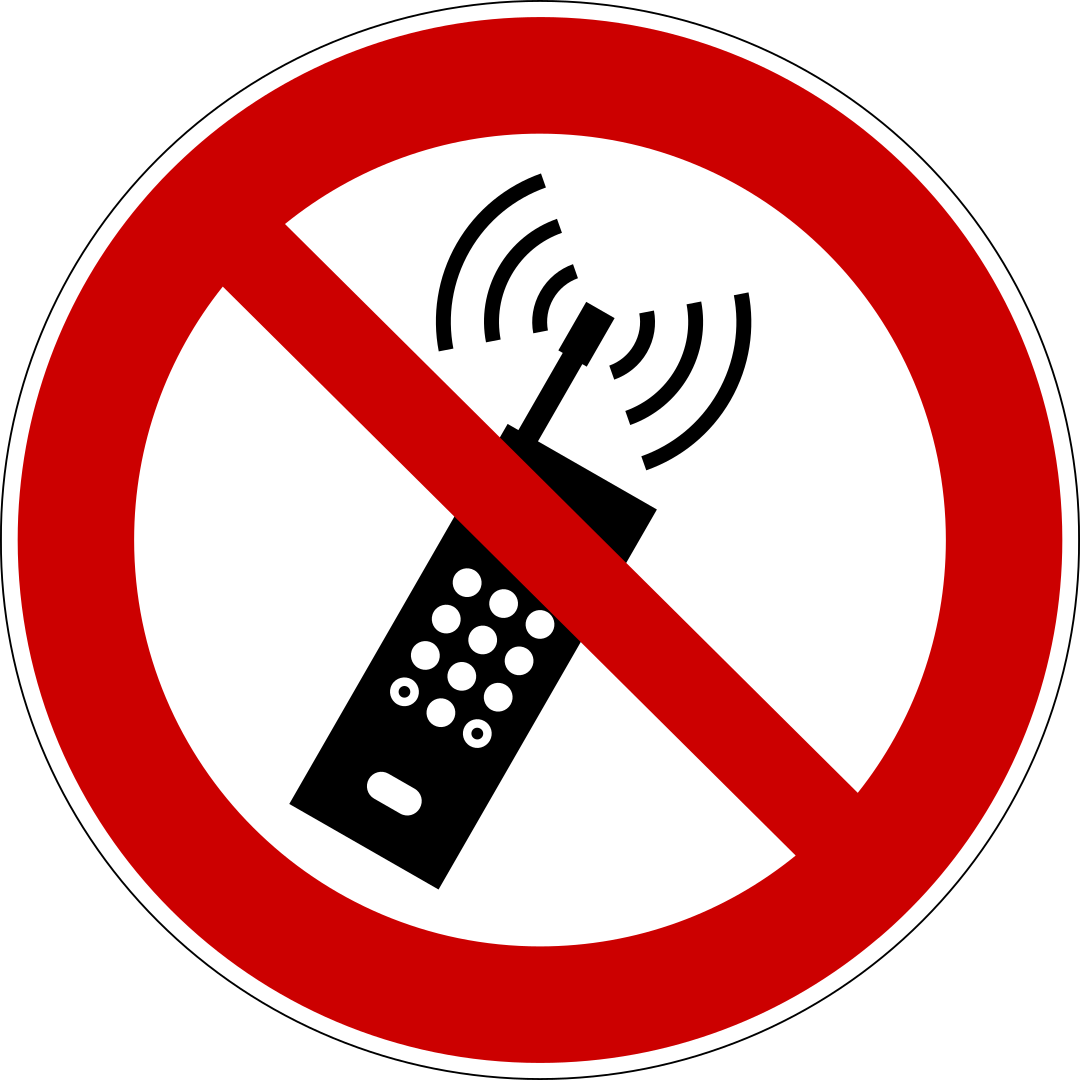
B
C
D
Correct Answer: A
Explanation: This sign indicates no activated phones are permitted in the area.
Explanation: This sign indicates no activated phones are permitted in the area.
41. What does a green and white sign indicate?
Give ONE answer
AB
C
D
Correct Answer: D
Explanation: Green and white signs are a general category of sign that signals safe conditions.
Explanation: Green and white signs are a general category of sign that signals safe conditions.
42. Which of the following will you find in an area where pressurised gas is in use?
Give ONE answer
AB
C
D
Correct Answer: C
Explanation: Pressurised gas should be signalled with a hazard sign with a cannister on it.
Explanation: Pressurised gas should be signalled with a hazard sign with a cannister on it.
43. What does this sign tell you?
Give ONE answer

B
C
D
Correct Answer: C
Explanation: This sign tells you that harnesses are mandatory.
Explanation: This sign tells you that harnesses are mandatory.
44. Which ONE of these signs indicates acute toxicity?
Give ONE answer
AB
C
D
Correct Answer: A
Explanation: A skull and crossbones signals acute toxicity. This is different from corrosive, environmental, or severe health hazards.
Explanation: A skull and crossbones signals acute toxicity. This is different from corrosive, environmental, or severe health hazards.
45. Why are turning areas important for safety?
Give ONE answer
AB
C
D
Correct Answer: C
Explanation: Reversing creates a pedestrian hazard, and turning areas are a useful way of avoiding it.
Explanation: Reversing creates a pedestrian hazard, and turning areas are a useful way of avoiding it.
46. When should the gap between a fixed point and a slewing plant be blocked off?
Give ONE answer
AB
C
D
Correct Answer: C
Explanation: Any gap under these circumstances that is 600mm or less should be blocked off.
Explanation: Any gap under these circumstances that is 600mm or less should be blocked off.
47. How can you avoid being crushed by a slewing plant?
Give ONE answer
AB
C
D
Correct Answer: D
Explanation: Do not enter the crush zone. What seems like a short exit route may in fact put you in greater danger.
Explanation: Do not enter the crush zone. What seems like a short exit route may in fact put you in greater danger.
48. A crane signaller needs to take a bathroom break in the middle of a task. They ask you to step in, and you are not trained in the correct signals. What should you do?
Give ONE answer
AB
C
D
Correct Answer: B
Explanation: You should not act as a signaller without the correct training and competence.
Explanation: You should not act as a signaller without the correct training and competence.
49. What TWO things might you do if a plant is going the wrong way down a one way system?
Give TWO answers
AB
C
D
E
Correct Answer: D, E
Explanation: In an emergency, you can take action to warn the operator and others nearby. You must still inform your supervisor of the incident.
Explanation: In an emergency, you can take action to warn the operator and others nearby. You must still inform your supervisor of the incident.
50. What does this signal mean?
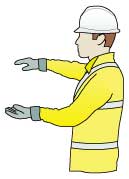
B
C
D
Correct Answer: D
Explanation: This signal is used to show the amount of vertical distance.
Explanation: This signal is used to show the amount of vertical distance.


